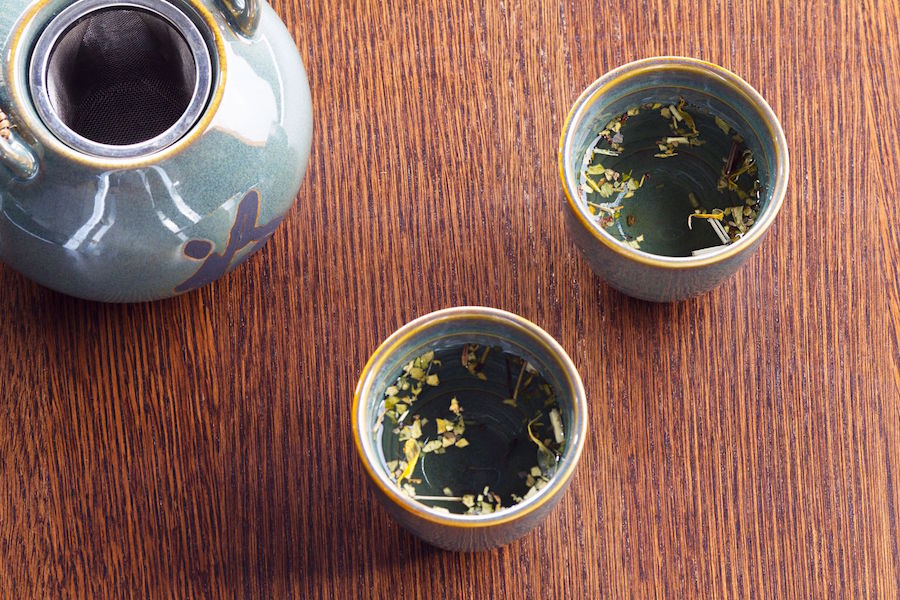Are you struggling to calm down on this Manic Monday? Nutritional therapist and yoga teacher Charlotte Watts, provides you with her expert advice on how to soothe yourself in times of stress in her new Calmista blog
Our bodies have natural calming mechanisms, but we often run ourselves at such high speeds that we lose the ability to plug into our natural braking systems. Some simple tips and dietary changes can provide an intervention when agitation takes over.
Self-soothing is the mechanism our bodies use to bring us back down to a calm place, after or even during a stressful event. This can mean finding the space to be able to decide the most compassionate and helpful reaction in a crisis or feeling all systems come back down after being completely revved up and reactive.
When we’re in chronic stress and feeling life has become one big hyper-vigilant ‘constant alert’, we can feel we’ve lost this route back to settling down, releasing pent-up mind-body tension and finding the peace we need for recovery. Without healthy self-soothing abilities, living in a heightened state can be exhausting, lead to whole host of stress-related symptoms (anxiety, insomnia, IBS and weight gain to name a few) and even create fear and negative thinking.
Soothing and calming all body systems is signalled via our vagus nerve, which wanders from our brain to wrap around all of our organs and affect their function. It signals the calming parasympathetic nervous system, also known as the ‘rest, digest and heal’ part of the brain, where we also dream, solidify memories and can think from a more creative perspective. Coming back to this state after time in the sympathetic ‘flight or flight’ tone, means we can digest optimally, blood can flow fully to the skin and high blood pressure and tense muscles can relax. All of these actions accumulate to an anti-ageing effect. That’s why de-stressed people look better than stressed out ones.
Scientists are currently exploring vagus nerve stimulation to see positive effects on epilepsy and treatment-resistant depression, but there are many natural ways we can increase our vagal tone and engage our inherent self-soothing in the face of stress:
1. Eat to self-soothe
The following foods have good levels of the amino acid glutamine and vitamin B6, from which our bodies make our main self-soothing neurotransmitter GABA (gamma-amino butyric acid): beef, chicken, fish, eggs, milk, dairy products, cabbage, beetroot, beans, spinach and parsley.
2. Drink green tea
It has shown to reduce the stress hormone cortisol, partly as it contains L-Theanine which engages the calming parasympathetic nervous system. This makes it a great alternative to more stimulating caffeine sources like coffee.
3. Take a good quality probiotic supplement
Look for the following strains which have shown to help produce GABA on the gut wall and influence the whole of our bodies, allowing us to beter cope with stress: Bifidobacteria and Lactobacillus, including the specific organism Lactobacillus rhamnosus.
4. Reduce your alcohol
Okay, so this is probably not the best time for this advice but it’s worth noting that alcohol may appear to help us self-soothe, but these affects are only temporary. Long-term it creates a reliance to use it to calm and blocks our ability to access our own calming GABA. Reduce intake gradually if you’ve been relying on it, to allow your brain to resensitise to your own calming mechanisms.
5. Breathe to the sound of ‘Aaahhhh’
Focus on the exhalation, breathing in deeply to let the calming out-breath really flow, even making an ‘ah’ sound to open the back of your mouth and release a tight head.
6. Soften your your face, touch your lips and…breathe again
We can access the vagus nerve directly behind eye balls, in the palate of the mouth, the tongue, the ear canal and lobe and surface of the lips. Yoga teachers often talk of ‘softening the eyes, face and jaw’ for this reason and we often soothe ourselves automatically by touching our lips (lip balm anyone?), opening our mouths and rubbing our ears. Simply sitting or lying and breathing space into these areas is highly releasing.
7. Wash your hands with warm water…yes really
Washing your hands with warm water, self-massage and placing a hand on your heart, belly or anywhere that feels calming plugs into our mammalian need for warmth and touch. Those with OCD (Obsessive Compulsive Disorder), autism and ADHD – where self-soothing issues are high – often use these methods to be able to deal with uncomfortably heightened emotional responses.
8. Ask for a hug
Ask for a hug or give one to yourself and breathe deeply to offer ‘letting go’ to your whole body. Human contact is one of the key ways to plug in your parasympathetic nervous system and recover from stress or crisis fast.

Like this article? Sign up to our newsletter to get more articles like this delivered straight to your inbox.






















































